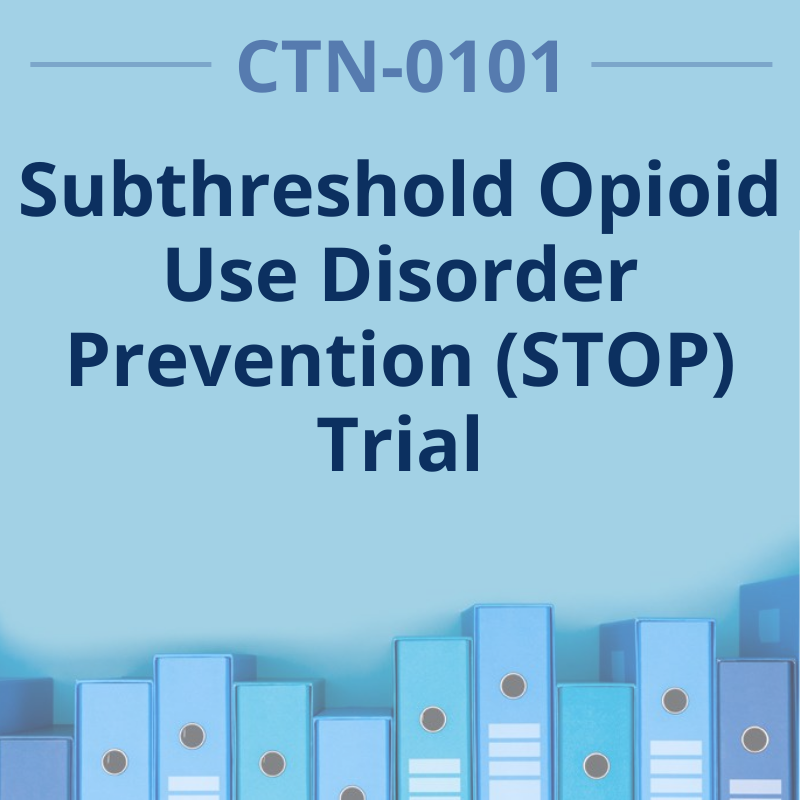CTN-0101: Subthreshold Opioid Use Disorder Prevention (STOP) Trial

Jennifer McNeely, MD, MS
Lead Investigator
New York University School of Medicine
Department of Population Health
Jennifer.McNeely@nyulangone.org
Jane Liebschutz, MD, MPH, FACP
Lead Investigator
Division of General Internal Medicine
University of Pittsburgh School of Medicine
liebschutzjm@upmc.edu
According to SAMHSA’s 2017 National Survey on Drug Use and Health (NSDUH), 11.4 million persons in US, report past year opioid misuse, out of which only 2.1 million individuals met criteria for an OUD. Very little is known about efficacious interventions for those who do not meet criteria for moderate/severe OUD (i.e. subthreshold OUD). The prevalence of subthreshold OUD in primary care settings is 5-10%, with higher rates (21-29%) among those receiving prescribed opioids. Although they are at high risk of developing a moderate/severe OUD and/or dying from an overdose, little or no empirical evidence exists for pragmatic prevention interventions that can be adopted at integrated general medical settings.
To study the efficacy of prevention interventions to arrest the progression from risky opioid use, researchers will test the efficacy of a Subthreshold Opioid Use Disorder Prevention (STOP) intervention in primary care settings. STOP adopts an early intervention approach, based on a collaborative care model to prevent progression to moderate/severe OUD and consists of: a practice-embedded nurse care manager who provides patient education and supports the primary care provider (PCP) in engaging, monitoring and guiding patients who have risky opioid use; brief advice delivered to patients by their PCP; and phone counseling of patients by behavioral health providers to motivate and support behavior change. Researchers will determine whether STOP reduces risky opioid use and examine the impact of STOP on progression to moderate-severe OUD, overdose risk behavior, and overdose events in adults with risky use of illicit or prescription opioids.
Funded by the NIH HEAL Initiative®.
Related Resources
Node Involvement
Lead Node(s):
All Participating Nodes: